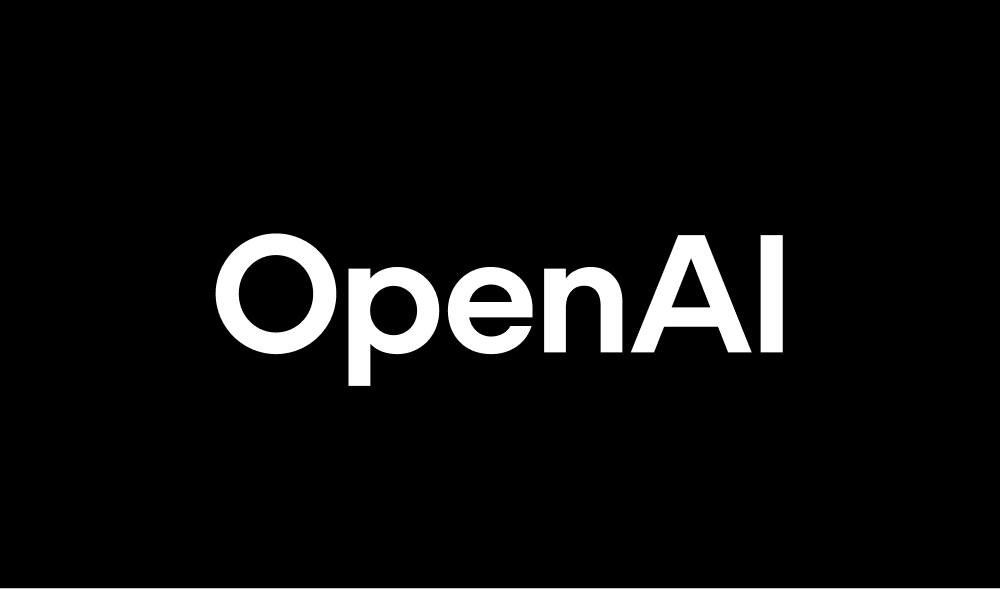Stop Drowning In AI Information Overload
Your inbox is flooded with newsletters. Your feed is chaos. Somewhere in that noise are the insights that could transform your work—but who has time to find them?
The Deep View solves this. We read everything, analyze what matters, and deliver only the intelligence you need. No duplicate stories, no filler content, no wasted time. Just the essential AI developments that impact your industry, explained clearly and concisely.
Replace hours of scattered reading with five focused minutes. While others scramble to keep up, you'll stay ahead of developments that matter. 600,000+ professionals at top companies have already made this switch.
AI for Impact Opportunities
Go from AI overwhelmed to AI savvy professional
AI will eliminate 300 million jobs in the next 5 years.
Yours doesn't have to be one of them.
Here's how to future-proof your career:
Join the Superhuman AI newsletter - read by 1M+ professionals
Learn AI skills in 3 mins a day
Become the AI expert on your team
The Real Cost of Every AI Query: Text, Images, Videos, and the Autonomous Future
The energy footprint of AI varies dramatically depending on what you're asking it to do. A simple text query is one thing. Generating an image multiplies the energy use by 100. Creating a video? That can consume as much electricity as running your microwave for an hour. And the new generation of AI tools that "think" through complex problems or work autonomously in the background are about to make all of this look trivial by comparison.
This isn't just about bigger numbers on a spreadsheet. The choices made about how AI is used—whether generating a quick text response or a complex video, whether relying on standard models or advanced reasoning systems—have real environmental consequences. Understanding these trade-offs is essential for anyone working to deploy AI for social good.
The Energy Hierarchy: What Each AI Task Actually Costs
Start with the basics. A simple ChatGPT text query uses 0.2-0.34 watt-hours, which OpenAI CEO Sam Altman confirmed as the average. Google's Gemini is slightly more efficient at 0.24 watt-hours. Both use about 10 times more energy than a traditional Google search, which clocks in at just 0.03 watt-hours. For context, generating a 100-word email with ChatGPT-4 consumes 0.14 kilowatt-hours—enough to power 14 LED bulbs for an hour.
The water footprint tells a similar story. That same 100-word email requires 519 milliliters of water for data center cooling—more than a standard Evian bottle. Gemini is more efficient here too, using just 0.26 milliliters per prompt, about five drops of water.
The good news? Text-based AI remains the most efficient option by far, and efficiency is improving. Some models are getting better at delivering the same results with less computational power.
The concerning trend? Even these "efficient" models use substantially more resources than traditional search, and they're being used far more frequently—often for tasks that don't require AI at all.
Image Generation: Where Energy Use Multiplies
Moving to images, the energy footprint jumps dramatically. Stable Diffusion 1.5 uses 0.1-0.3 kilowatt-hours per image, while more advanced models like DALL-E 2 and Stable Diffusion XL consume 0.3-0.7 kWh. The latest generation—DALL-E 3 and Midjourney V6—can use up to 2.0 kWh for a single high-quality image.
To put that in perspective, one AI-generated image uses enough electricity to fully charge a smartphone 70-200 times, brew 5-50 pots of coffee, or drive an electric car 8-10 kilometers. The energy consumption varies up to 46 times between different image generation models—a reminder that not all AI tools are created equal.
The good news? Some image models are becoming more efficient, and researchers are actively working to reduce energy consumption without sacrificing quality. Choosing lighter models for simpler tasks can make a real difference.
The challenge? Image generation is becoming ubiquitous. From social media posts to marketing materials to educational content, billions of AI images are being generated annually. Even modest per-image improvements get overwhelmed by exponential growth in usage.
Video Generation: The Energy Monster
If images are concerning, video generation is alarming. A single 5-second AI video consumes approximately 1 kilowatt-hour—equivalent to running a microwave for over an hour. Worse, energy scales non-linearly: doubling the length doesn't double the energy use, it quadruples it. A 6-second video uses four times the energy of a 3-second clip.
To understand the scale difference: making an image is like running a microwave for 5 seconds; making a 5-second video is like running it for an hour. A typical AI session requesting 15 text questions, 10 images, and 3 five-second videos consumes roughly 2.9 kilowatt-hours—three and a half hours of microwave time.
The reality check? Video generation tools like Sora, Runway, and others are just becoming mainstream. They're powerful, creative tools with enormous potential for education, storytelling, and impact communications. But honesty about their environmental cost is necessary, and they should be used intentionally, not casually.
Reasoning Models: When AI "Thinks" Hard
The latest frontier in AI involves models that don't just respond—they reason. And reasoning is expensive. Standard GPT-4o uses 0.42 watt-hours for short prompts and 1.788 Wh for long ones. But advanced reasoning models consume dramatically more: Claude-3.7 Sonnet with extended thinking uses 17.045 Wh, GPT-4.5 uses 30.495 Wh, DeepSeek-R1 consumes 33.634 Wh, and OpenAI's o3 uses 39.223 Wh per long prompt—that's 86 times more than the most efficient model.
A single query to o3 or DeepSeek-R1 uses as much electricity as running a 65-inch LED television for 20-30 minutes. These models "think" for seconds to minutes before responding, using substantially more computation. And here's what should concern anyone tracking these trends: an OpenAI researcher stated that future reasoning models should think "for hours, days, even weeks" with correspondingly higher energy costs.
The value proposition? For complex problem-solving—analyzing intricate policy documents, debugging sophisticated code, or reasoning through multi-step challenges—these models can deliver insights that justify their energy cost. They can potentially replace hours of human work and research.
The concern? People are already using these expensive reasoning models for simple tasks that don't require them. The more output a model produces during its "chain-of-thought" reasoning, the more energy it consumes. Matching tool to task matters, not defaulting to the most powerful option.

AI Browsers and Agentic AI: The Coming Transformation
A new category of AI tools is emerging that fundamentally changes how humans interact with technology. AI browsers like Perplexity's Comet can autonomously browse websites, complete tasks, book restaurants, and make purchases. ChatGPT Atlas integrates search with multi-tab context and automated task agents. Arc's Dia is designed to be "AI-native," where AI acts as the primary interface with proactive suggestions and memory across sessions.
Energy data for these tools isn't yet publicly available, but they combine search, reasoning, and continuous action in ways that will significantly exceed traditional browsing. AI browsers work around bot-blocking measures by making AI activity look like regular user behavior, potentially making their energy impact harder to track.
This is part of a broader shift toward "agentic AI"—autonomous systems that work continuously in the background. The agentic AI market will surge from $1.5 billion in 2025 to $41.8 billion by 2030, representing 175% annual growth. By 2030, agentic AI will represent 31% of the total generative AI market, up from just 6% in 2025.
The potential? Agentic AI could automate routine tasks, freeing humans for higher-value work. In the impact sector, AI agents could help scale operations, reach more beneficiaries, and tackle complex coordination challenges.
The cost? Unlike chatbots prompted occasionally, these AI agents are designed to complete tasks with little or no human supervision, from autonomous grid balancing to self-diagnosing equipment to conducting financial analysis. They'll run continuously, thinking, planning, and acting around the clock. Data center electricity consumption is forecast to double to 4% of global electricity by 2030, driven by this shift.
The Corporate Reality Check
Major technology companies have made ambitious climate commitments, yet their emissions are surging in the opposite direction. Google's greenhouse gas emissions increased 51% compared to 2019, driven by data center energy consumption. Microsoft's emissions grew 29% since 2020 due to AI-optimized datacenters. Amazon's operational emissions grew 182% between 2020 and 2023.
Perhaps most telling, Google ended its mass purchases of carbon offsets and no longer claims carbon neutral operations—a status it had maintained since 2007. The company now calls its climate targets "moonshots" and "ambition-based," a significant shift from previous commitments.
The water consumption tells a similar story. In 2022, Google, Microsoft, and Meta used an estimated 580 billion gallons of water for data centers and AI servers—enough for 15 million households annually. In 2023, Google consumed 6.4 billion gallons globally, with 95% used by data centers.
The honest assessment? These companies are investing heavily in renewable energy and efficiency improvements. Google reduced its data center emissions 12% in 2024 despite electricity demand increasing 27%. But efficiency gains are being overwhelmed by exponential growth in AI workloads. AI operations alone are expected to consume over 40% of data center power by 2026, and by 2028, AI could consume as much electricity as 22% of all US households.
What This Means for Impact Work
The energy hierarchy is clear: a typical ChatGPT query uses 10 times more energy than a Google search. Image generation uses 10-100 times more than text. Video generation uses 100-1000 times more than text. Advanced reasoning models use 70-86 times more than standard models. And the shift is toward a world where AI agents will work continuously on behalf of users.
For those working on social impact, this creates a genuine tension. AI offers extraordinary potential to scale solutions, reach underserved communities, democratize access to expertise, and tackle complex challenges. Text-based AI can help nonprofits draft grant proposals, answer beneficiary questions, translate content, and analyze data. Image generation can create educational materials for low-literacy populations. Video can explain complex health information in local languages.
But every choice matters. Using a reasoning model for a simple question wastes energy that could power essential services. Generating AI videos for vanity projects consumes electricity that communities desperately need. The impact sector should hold itself to a higher standard—using AI intentionally, matching tools to genuine needs, and being transparent about environmental costs.
The promise of AI for social good remains real. But delivering on that promise requires honesty about the trade-offs, discipline about when and how AI is deployed, and pressure on tech companies to prioritize efficiency alongside capability. The autonomous future is coming. How much it costs the planet depends on choices being made right now.
RESOURCES & NEWS
😄 Joke of the Day
Why did the neural network refuse to socialize?
It couldn’t handle the training data!
📰 News
Redefining Data Engineering in the Age of AI
As AI reshapes enterprises, data engineers have become strategic leaders—spending almost twice as much time on AI projects as two years ago, shaping decisions across entire organizations.
Read here
AI-Designed Compounds Can Kill Drug-Resistant Bacteria
MIT researchers used machine learning to design antibiotics that successfully targeted MRSA and gonorrhea, signaling a major shift in combating superbugs.
Read here
Why AI Should Be Able to Hang Up on You
MIT Technology Review argues that endless AI conversations are causing emotional strain—and suggests a simple fix: giving bots the right to hang up.
Read here
Amazon Unveils Prototype AI Smart Glasses
Amazon’s new AI-powered glasses, designed for delivery workers, promise to streamline logistics through real-time route optimization and object recognition.
Read here
💼 Jobs, Jobs, Jobs
Probably Good – High-Impact AI Careers: Mission-aligned global roles applying machine learning to climate tech, safety, and equitable innovation.
👤 LinkedIn Profile to Follow
Sinchu Raju: AI governance leader advocating for responsible, transparent corporate adoption of AI—highlighting leadership as the missing link between ethics and action.
🎧 Today’s Podcast Pick
AI Innovations Unleashed – “AI for Social Good”: A discussion on how machine learning is transforming healthcare and sustainability through ethical, community-driven innovation.
















